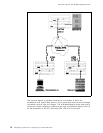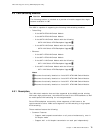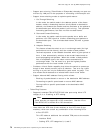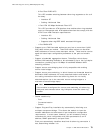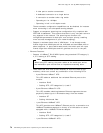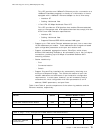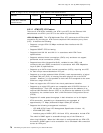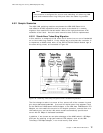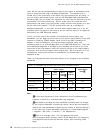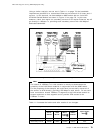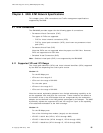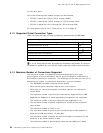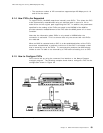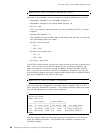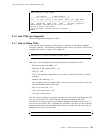
This soft copy for use by IBM employees only.
Next, we can use microsegmentation to reduce the number of workstations that
have to share the token-ring′s 16 Mbps of bandwidth. The segment size is
limited only by the granularity of the token-ring concentrators you are using. If
you are using a port-switching hub, such as the IBM 8260 Nways Multiprotocol
Switching Hub, you can make your segments any size from two devices up to the
architectural limit of the token-ring. And for those users who need the most
performance that token-rings can provide, simply connect them directly to a port
on the LAN switch module. This will provide them with up to 32 Mbps of
dedicated bandwidth. In this case, since we have already used up 3 of our 24
available token-ring ports for the servers, we can have as many as 21 segments
switched by the LAN Switching module.
Finally, to further reduce the number of workstations sharing token-ring
bandwidth, you can begin to move some of your power users directly to the ATM
network by installing ATM25 adapter cards, such as the IBM Turboways 25
adapter, in their workstations, running the simple migration utility, and
connecting them to an ATM 25 Mbps port on the IBM 8285 Base Unit. They now
have dedicated bandwidth of 25 Mbps to their desktop and access to all of the
resources of the ATM network, while still retaining access to the shared media
resources, such as the full-duplex token-ring servers. We do that with 12 of our
workstations, reducing the number of workstations on shared token ring
segments to 68.
Table 10 illustrates the before and after effects of our changes on the available
bandwidth.
Note:
1In this case assuming an even distribution of four workstations per
segment on each of 21 available token-ring segments.
2Calculated by dividing the total bandwidth available after the change
by the original bandwidth available per device, which was calculated by
dividing the total bandwidth available by the number of devices sharing it.
In this case, the original bandwidth calculation is: 16,000 Kbps/segment *
1 segment / (80 users + 4 servers) = 191 Kbps/device.
3.This is an average value. The 12 segments with three
devices/segment would actually receive 5,333 Kbps while the remaining
nine segments would have four devices apiece, each receiving 4,000
Kbps.
Table 10. Bandwidth Improvement with Token-Ring LAN Switch Module
Device Maximum Bandwidth Available
After...(Kbps)
Bandwidth
Improvement
Ratio2
Server
Offload
ATM
Server
Micro-
segment
-ation1
ATM25
Offload
Primary Server 32000 155000 155000 155000 811x
Secondary Server 32000 32000 32000 32000 167x
Token-Ring
Desktop
200 200 4000 49423 25x
ATM Desktop 200 200 4000 25000 130x
78 ATM Workgroup Solutions: Implementing the 8285 ATM Switch



